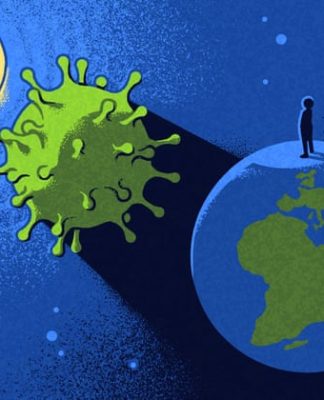What Is HIV?
Though the definition is simple, the effect of human immunodeficiency virus on the body is far from that.
Doctors use simple criteria for diagnosing a human immunodeficiency virus (HIV) infection: A person has HIV if they have a detectable level of the virus on a blood test, or (with the exception of babies of HIV-positive mothers) a positive blood test for antibodies (infection-fighting proteins) against the virus. If you’re infected with HIV, it’s possible, but not certain, that you will eventually develop AIDS — acquired immune deficiency syndrome.
The criteria for diagnosing HIV is slightly different in newborn infants because HIV antibodies can be passed to the baby from the mother before or during birth, but the infant may not actually be infected with the virus. In such cases, the antibodies may be detected in a baby’s blood at birth, but there may be no evidence of antibodies by the time the baby is 12 to 18 months old.
In 2010, the most recent year for which statistics are available, an estimated 47,500 people in the United States were newly infected with HIV. Also, according to the Centers for Disease Control and Prevention (CDC), as of 2009, approximately 1,148,200 people in the United States were living with HIV infection, with 18 percent of those who are undiagnosed or unaware of their HIV-positive status.
HIV: How Does It Affect the Body?
As HIV infection progresses, it weakens a person’s immune system. A person with HIV frequently will fall ill with diseases that a healthy person would be able to fend off.
HIV: How Is It Contracted?
The highest concentrations of HIV in the body are found in blood, semen, and vaginal secretions, so any contact with these bodily fluids from an infected person may be a route of transmission.
This includes heterosexual or same-sex contact with any of these fluids, as well as sharing of used needles.
HIV also is present in sweat, saliva, and tears, but in much lower concentrations. The CDC reports that it has never documented a case of HIV transmission through any of these routes.
HIV: What Are the Symptoms?
It is possible to live with HIV infection for years, even decades, without any significant symptoms of HIV infection, though some of the more frequently seen signs are weight loss, fever, or unexplained fatigue.
As HIV progresses, two factors generally indicate the severity of infection. The first is the number of cells produced by the body to fight HIV infection, called CD4+ T-cells, or simply “CD4 cells.” Lower CD4 counts indicate that the disease is gaining in severity due to a weakened immune system.
The second factor is the presence of one of 26 so-called AIDS-defining conditions, most of which are rare in a person who does not have HIV. Some of the more common AIDS-defining conditions are cryptococcosis (a fungal disease), tuberculosis, a type of pneumonia called pneumocystis pneumonia, and a type of skin cancer called Kaposi’s sarcoma.
How Is HIV Different From AIDS?
HIV infection generally progresses through stages until a person reaches the final and most severe stage, acquired immune deficiency syndrome, or AIDS.
But HIV infection does not always lead to the development of AIDS. Rather, the introduction of effective therapies for HIV infection (highly active antiretroviral therapies, or HAART) has disrupted the progression of HIV infection to AIDS, said Kali Lindsey, vice president of federal affairs for the National Association of Persons with AIDS (NAPWA), in Silver Spring, Md. It is increasingly possible for someone with HIV infection receiving HAART to live for many years without developing AIDS.
The success of HAART for HIV infection has helped de-stigmatize the disease, said Lindsey. Additionally, the CDC has pushed for broader HIV testing in a move that may help even further to “normalize” HIV infection, so that it is regarded more as a manageable chronic disease rather than a death sentence. Lindsey and others who work with HIV/AIDS patients hope that this will encourage more people to seek early testing and treatment, a cornerstone of the HIV/AIDS awareness movement.
Source: Everydayhealth.com

































